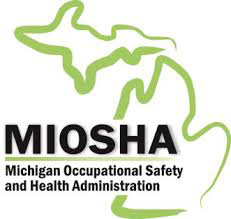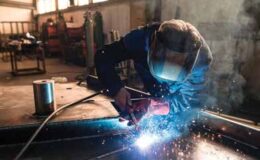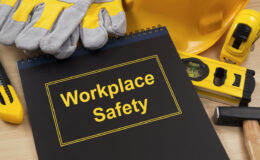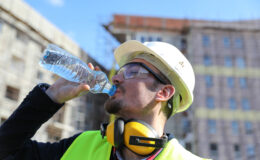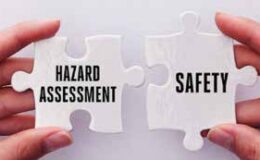By Ruth Kiefer, Loss Control Manager, MSc, ARM
Last year was a record year in the State of Michigan for high fall injuries and fatalities related to those falls. Our policyholders were fortunate enough not to sustain any of the noted fatalities, but we did however, have some severe high fall injuries along with other worker injuries related to slip, trip, and fall hazards. In a collaborative effort to combat these types of injuries, the federal government and our state MIOSHA are making efforts to reduce the amount of injuries and fatalities related to high falls along with addressing slip, trip and fall injuries from poorly maintained production floors.
To accomplish this push in safety MIOSHA will be adopting major changes to their walking-working surfaces and fall protection general industry standards. The new ruling, will also be referred to as Subpart D, and will follow the federal OHSA’s updates to this standard.
What does this mean for you and your employees?
- You must now train all employees on high fall hazards. This means that before an employee is exposed to a high fall hazard, the employer must provide training to each employee who uses personal fall protection system or is required to be trained in accordance with Subpart D. The equipment covered under Subpart D, is located in the next paragraph below the bullets.
- You must train employees on all equipment hazards, the proper care of such equipment, inspection, storage, and use of equipment.
- If you have permanent anchorages for rope descents systems, they must now be certified and tested to ensure that they can support 5,000 pounds for each employee attached.
- On existing fixed ladders that extend more than 24 feet above a lower level including fixed ladders on outdoor structures, a personal fall arrest system, ladder safety system, cage or well, must now be installed. Be aware that eventually you will need to eliminate the cage or well system and replace it with a fall arrest system, or ladder safety system. Therefore, you might forgo the installation costs of a cage or well system and use the updated methods of the fall arrest system or ladder safety system.
- On new fixed ladders that extend more than 24 feet above a lower level, they must have a personal fall arrest system or ladder safety system the use of a cage or well is no longer permitted.
- Eventually, all fixed ladders that extend more than 24 feet above a lower level, must replace cages and wells with ladder safety system or personal fall arrest system. OSHA does not consider cages and wells to be adequate ladder safety systems. A ladder safety system usually consists of a carrier, safety sleeve, lanyard, connectors, and body harness.
What type of equipment is covered under Subpart D of the standard?
Equipment covered under Subpart D includes alternating tread type stairs, anchorage points, combination ladders, extension ladders, fixed ladders, guard rail system, handrails, individual run ladders, general ladders, mobile ladder stands, portable ladder, working platforms, work-positioning systems, scaffolding, ship ladder, side step ladders, spiral ladders, stepladder, stepstool, and through ladders.
What are the other parts of the standard that a compliance officer would look at?
The general gist of the new changes means that all working surfaces must be kept clean, orderly and in sanitary condition. Your production floors must be clean, and in dry condition. When wet processes are used, drainage must be maintained and dry areas provided to your employees by use of false floors, platforms, or mats. They must also be free of hazards such as sharp or protruding objects, loose boards, spills, snow, and ice.
How do I learn more or get training materials?
If you need assistance with the standard changes, please contact your loss control consultant for assistance or more information regarding the changes. To assist you with complying with the training requirement of the standard changes, we also have on our Portal, safety videos that cover fall protection, ladder safety and walking working surface safety. Please feel free to utilize this free service that we provide to you. If you do not have a log in authorization, please contact your company president to obtain authorization to the portal. If you have further questions to gaining portal access please contact Patty Allen at (248) 715-0013.

